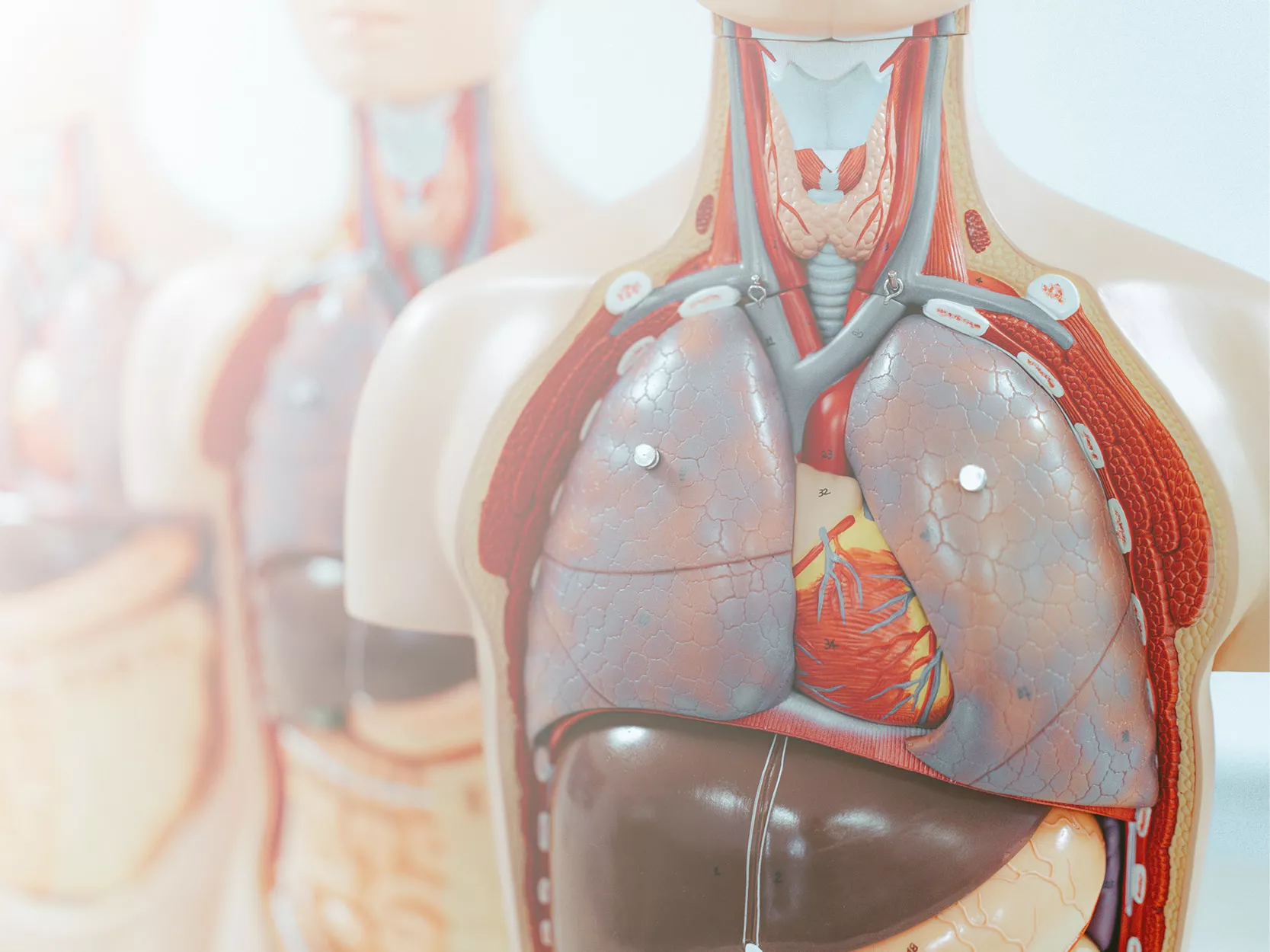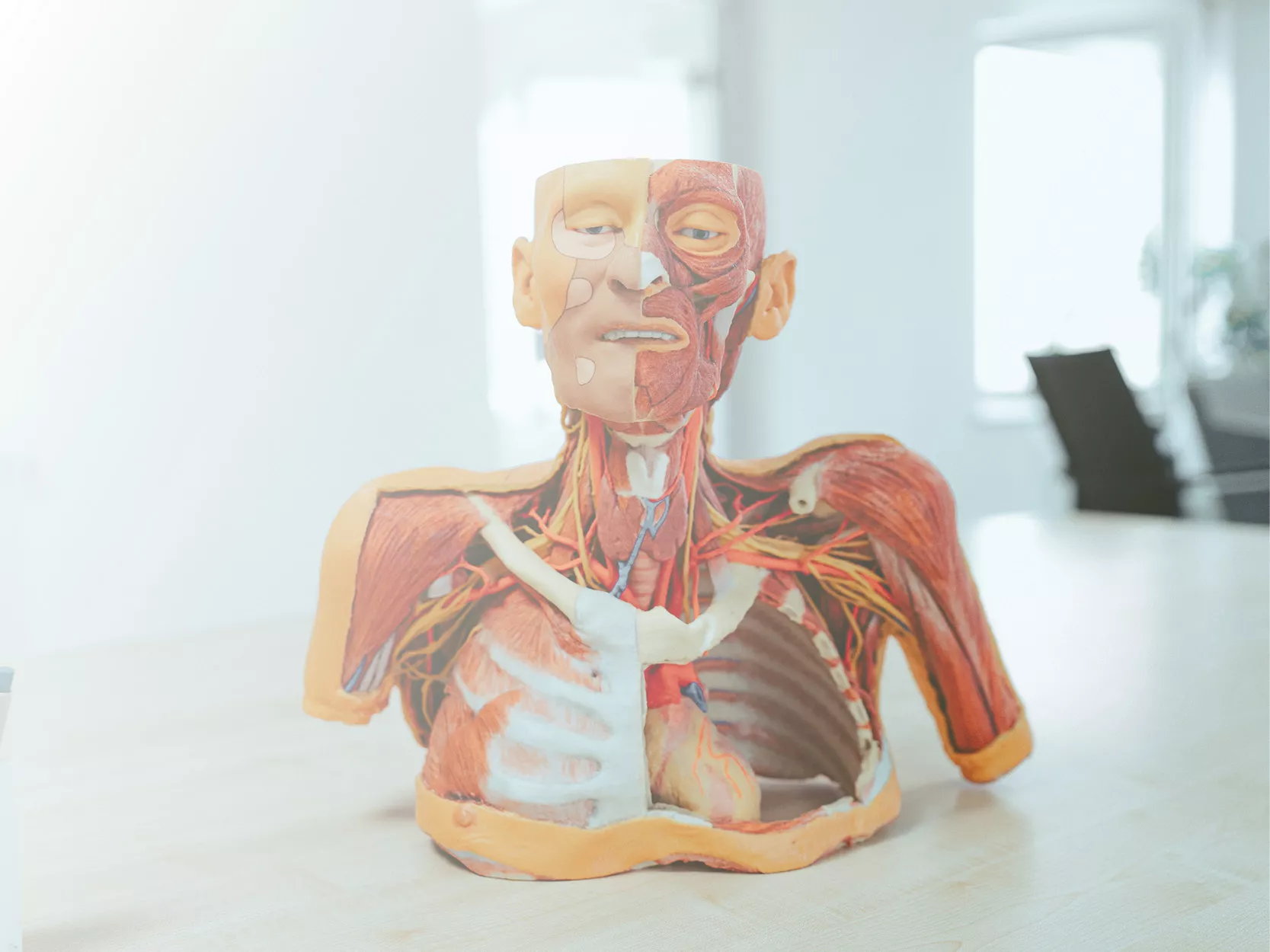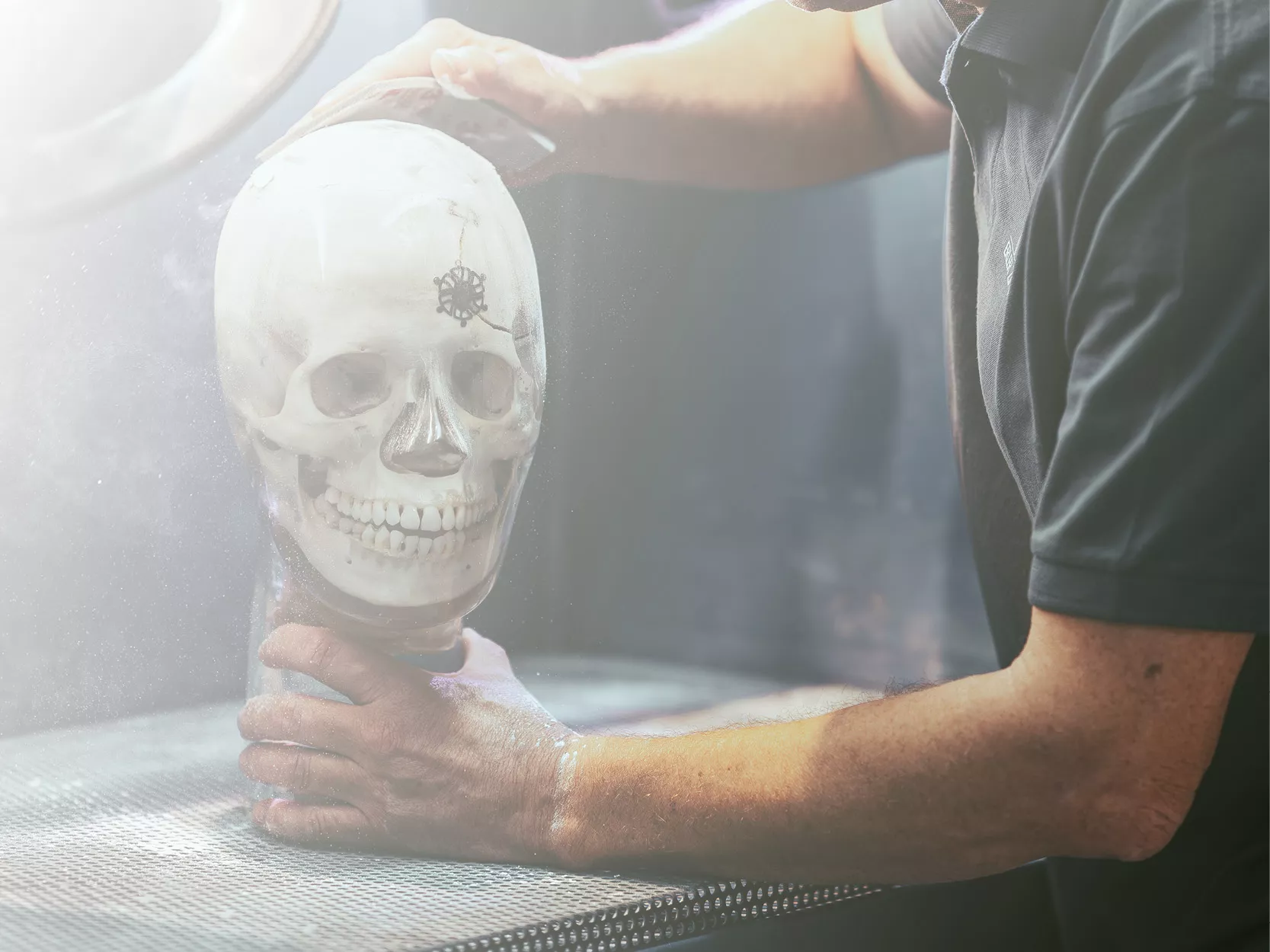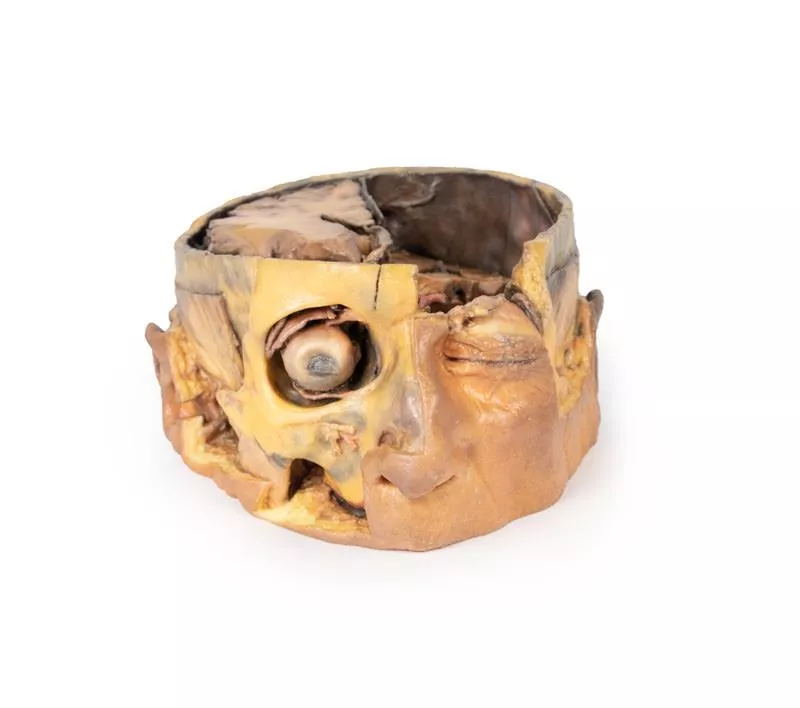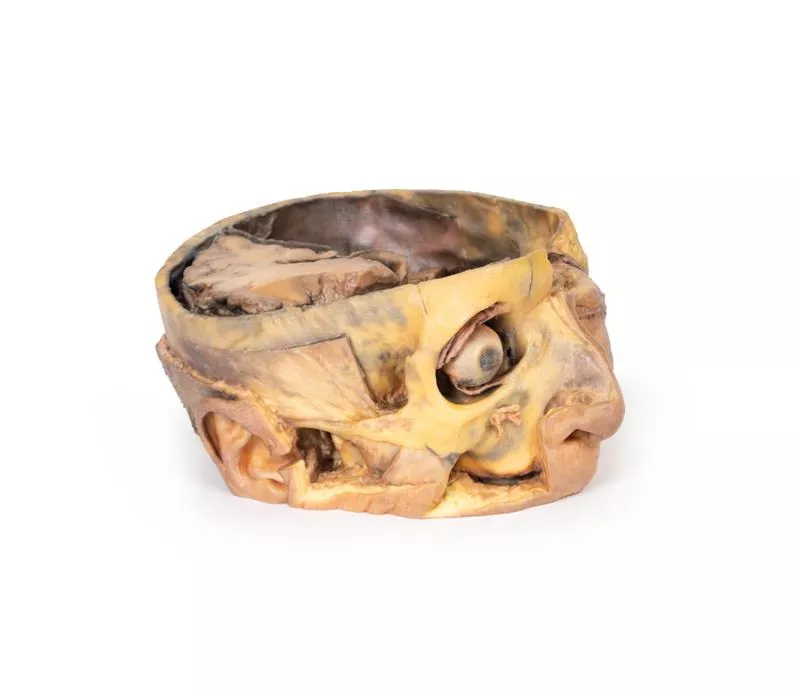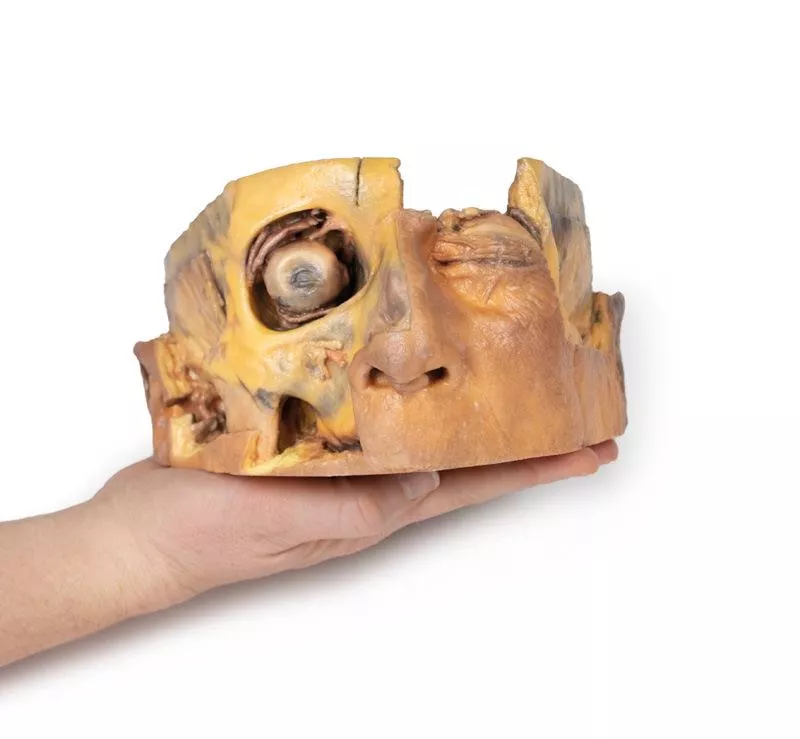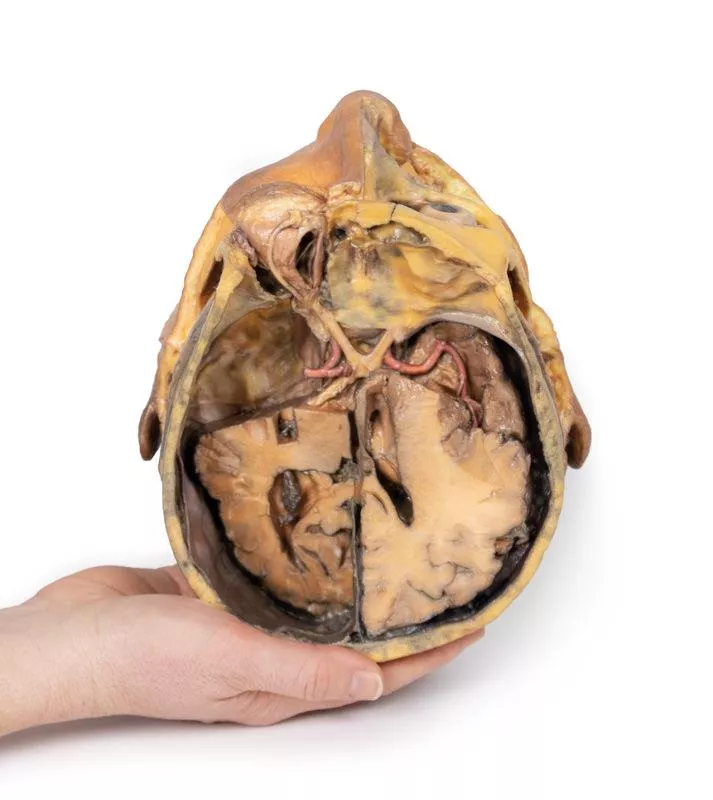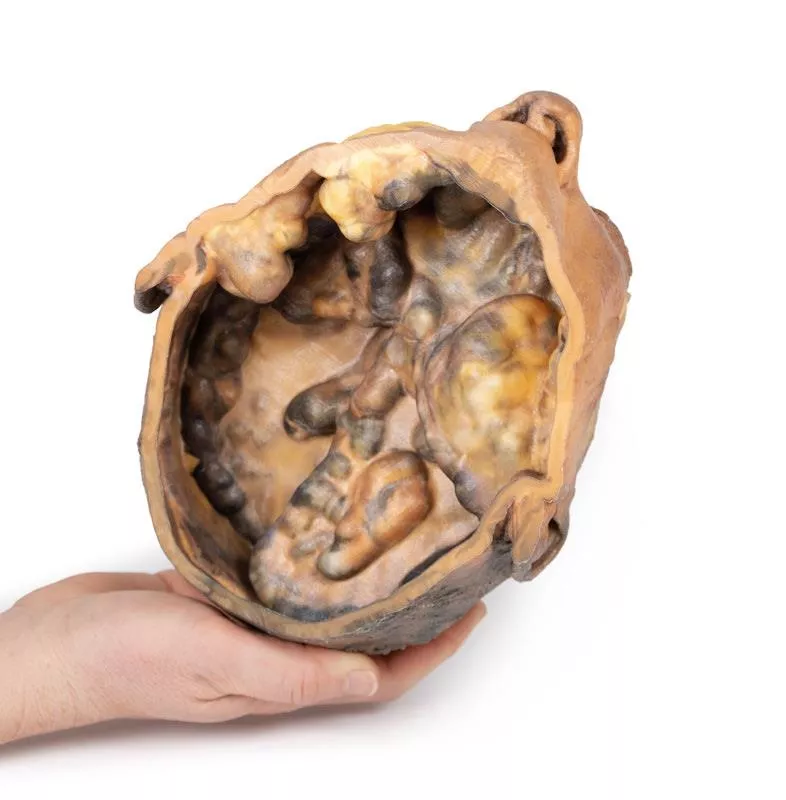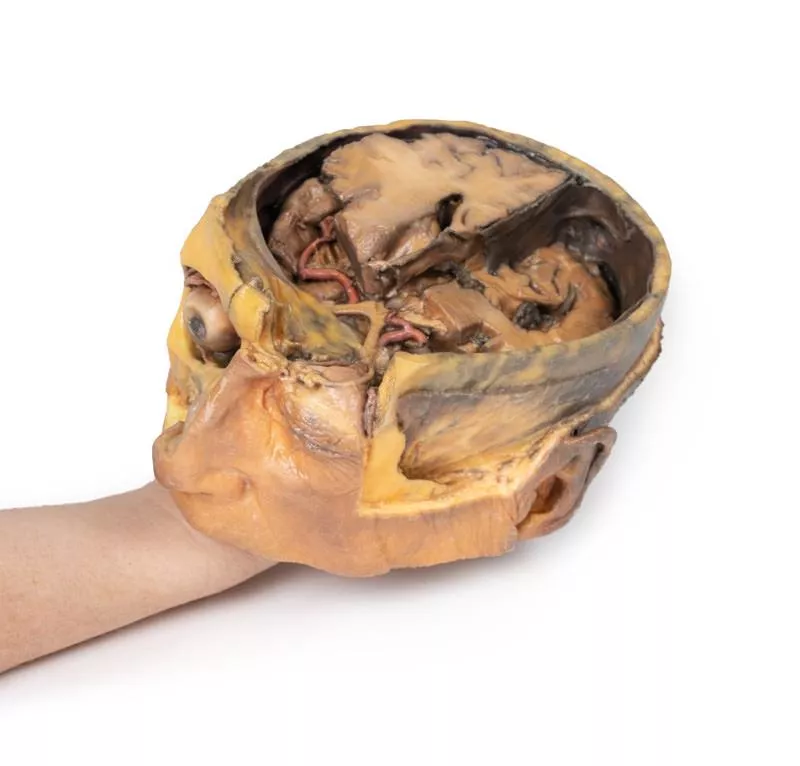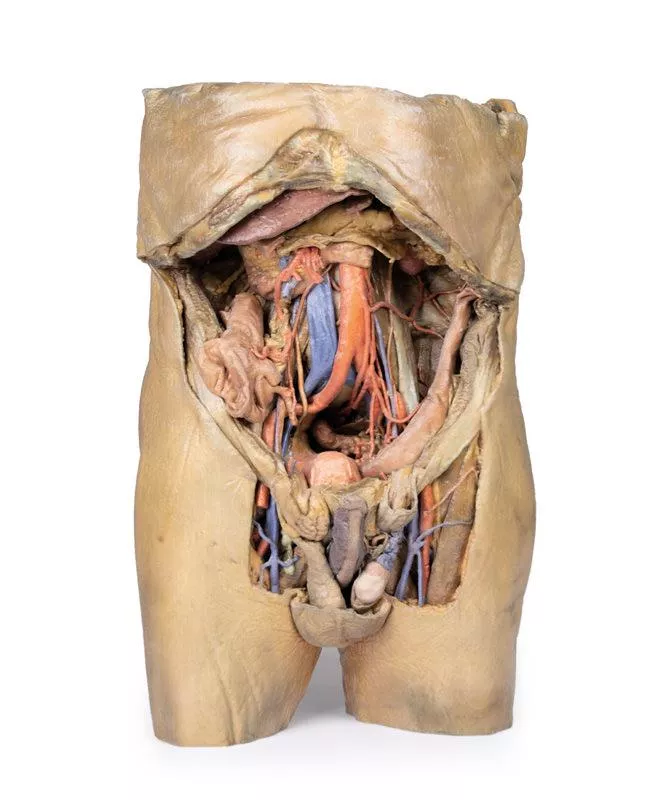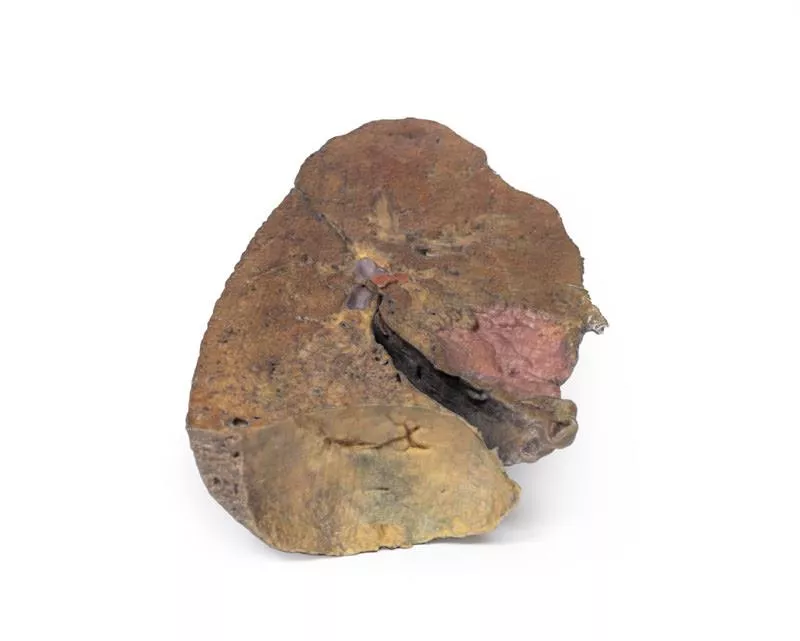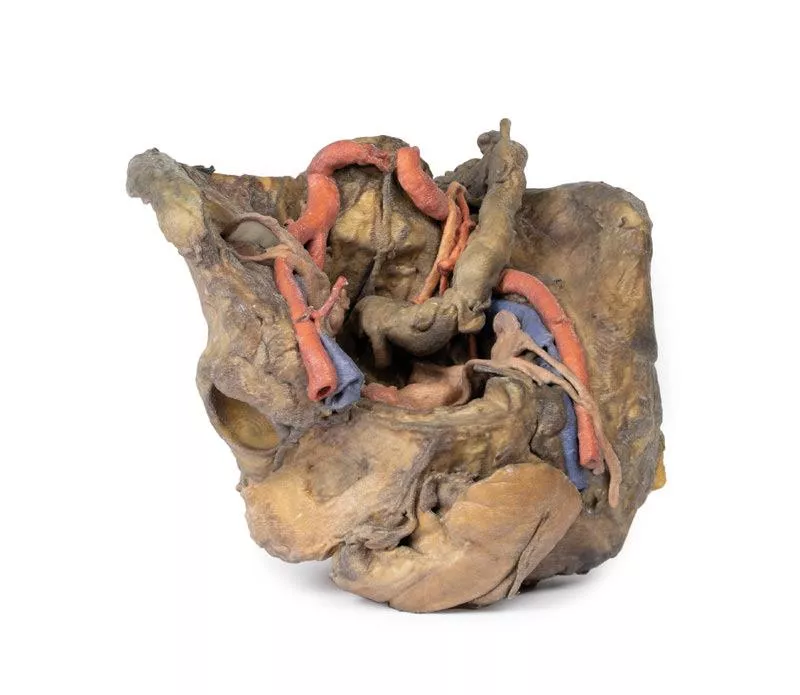Product information "Transverse Section of the head"
This 3D model features a transverse section through the cranial cavity with a deep dissection of the face, orbit, and temporomandibular joint (TMJ) region. It offers a comprehensive view of both intracranial and facial structures.
Key Features:
Cranial Cavity & Brain
- Partial dura mater removal; dissection reveals lateral and third ventricles, falx cerebri, choroid plexus, and optic pathways
- Middle cerebral artery visible in the lateral fissure
- Key vascular structures: internal carotid, anterior and middle cerebral arteries
Left Orbit
Roof removed; exposure of: Frontal nerve, lacrimal gland, superior oblique, medial rectus, nasociliary nerve
Right Orbit
Superficial tissues removed; shows: All extraocular muscles, including inferior oblique, and levator palpebrae superioris
Face & TMJ (Right Side)
- Exposed: infraorbital nerve/artery, masseter (both heads), and temporalis muscle near pterion
- Parotid gland dissected to show mandibular condyle in glenoid fossa and external ear alignment
Key Features:
Cranial Cavity & Brain
- Partial dura mater removal; dissection reveals lateral and third ventricles, falx cerebri, choroid plexus, and optic pathways
- Middle cerebral artery visible in the lateral fissure
- Key vascular structures: internal carotid, anterior and middle cerebral arteries
Left Orbit
Roof removed; exposure of: Frontal nerve, lacrimal gland, superior oblique, medial rectus, nasociliary nerve
Right Orbit
Superficial tissues removed; shows: All extraocular muscles, including inferior oblique, and levator palpebrae superioris
Face & TMJ (Right Side)
- Exposed: infraorbital nerve/artery, masseter (both heads), and temporalis muscle near pterion
- Parotid gland dissected to show mandibular condyle in glenoid fossa and external ear alignment
Erler-Zimmer
Erler-Zimmer GmbH & Co.KG
Hauptstrasse 27
77886 Lauf
Germany
info@erler-zimmer.de
Achtung! Medizinisches Ausbildungsmaterial, kein Spielzeug. Nicht geeignet für Personen unter 14 Jahren.
Attention! Medical training material, not a toy. Not suitable for persons under 14 years of age.




